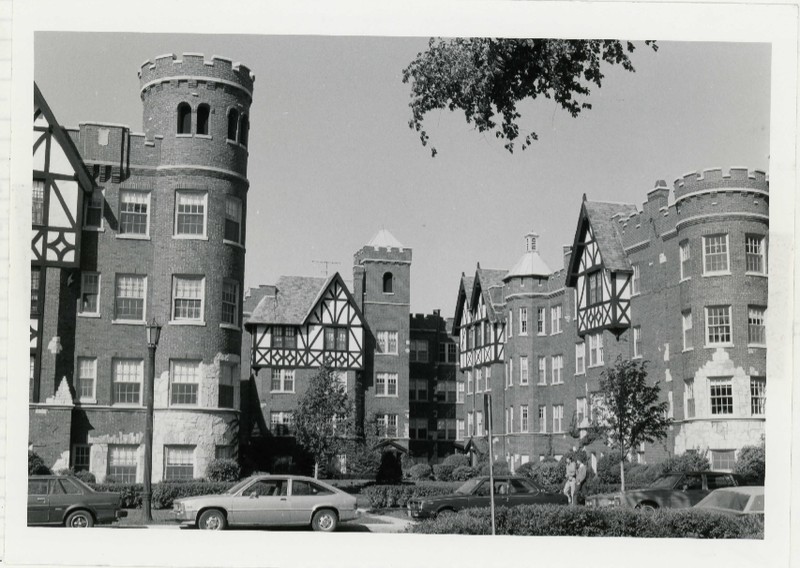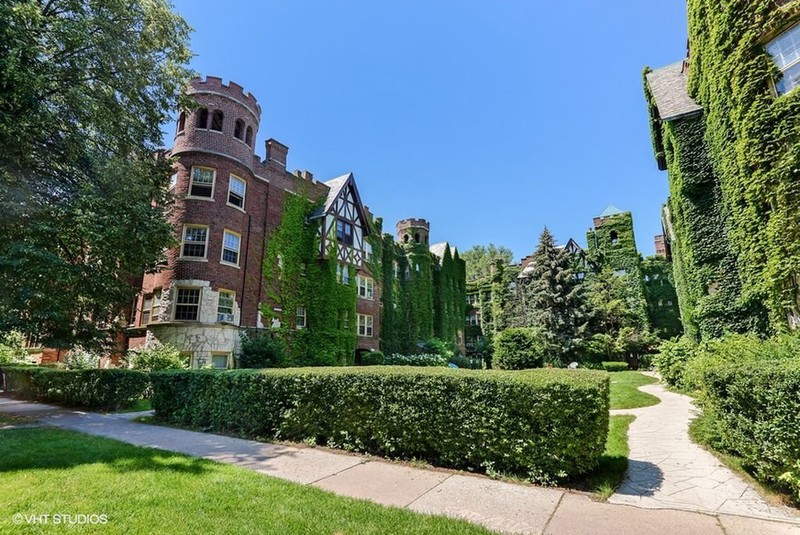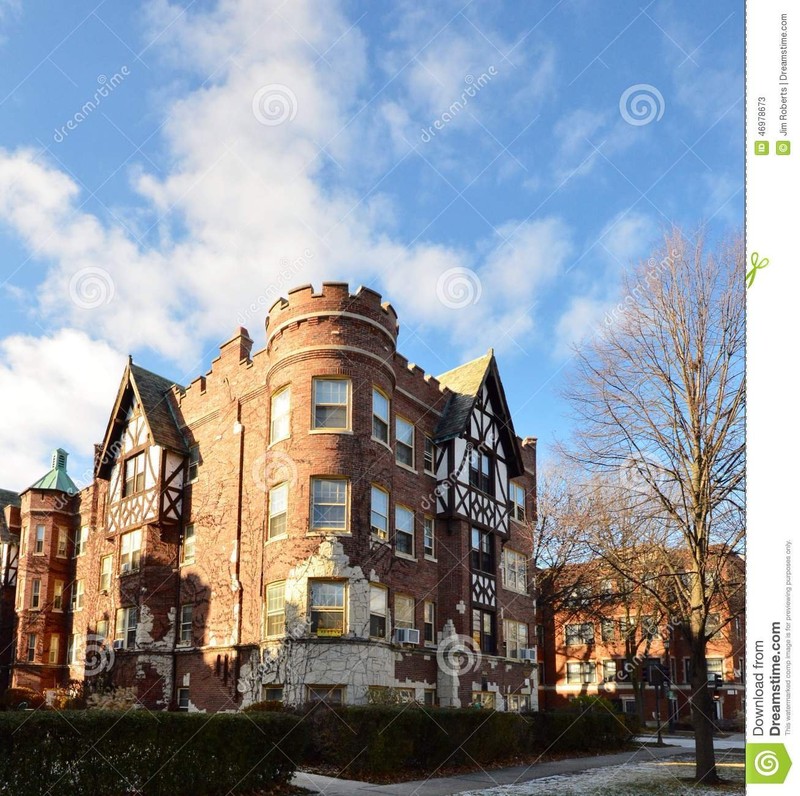Castle Tower Apartments
Introduction
Text-to-speech Audio
Images
Taken 1983 - Castle features, Tudor-style and the courtyard are prominent in this photo.

Ivy filled courtyard: Date Unknown.

"This is a picture of the Castle Tower Apartments in Evanston, Illinois. This structure is an example of the Tudor Revival Architectural Style and was built in 1928. The apartment building was added to the National Register of Historic Places on March 15,

Backstory and Context
Text-to-speech Audio
Sources
Brown, Victoria Bissell. "Jane Addams," in Women Building Chicago 1790-1990: A Biographical Dictionary. edited by Rima Lunin Schultz and Adele Hast. Bloomington: Indiana University Press, 2001.
Duis, Perry R. Challenging Chicago: Coping with Everyday Life, 1837-1920. Urbana, IL: University of Illinois Press, 1998.
Hansmann, Della. "Chicago Building Types: The Courtyard Apartment." Moss Architectural Design. September 30, 2014. http://moss-design.com/courtyard-apartment/.
Hoffmann, John, editor. A Guide to the History of Illinois. New York: Greenwood Press, 1991.
"Nomination Form: Suburban Apartment Buildings in Evanston Thematic Resource: Castle Tower Apartments" National Register of Historic Places. January 30, 1984. Digitized form currently found at the National Archive Catalog at https://catalog.archives.gov/id/28890902
Prosser, Daniel J. "Chicago and the Bungalow Boom of the 1920s." Chicago History 10.2 (1981): 86–95.
Little, Anne. "Courtyard Buildings A Piece Of History These Friendly Gems Dot The Area." Chicago Tribune(Chicago)August 04, 1987. . http://articles.chicagotribune.com/1987-08-14/news/8703020874_1_building-s-architecture-courtyard-ta...
Magida, Phyllis. "Fairy Tales Can Come True - When Your Home Is A Castle." Chicago Tribune(Chicago)June 18, 1988. . http://articles.chicagotribune.com/1988-06-18/news/8801080777_1_heating-kings-and-queens-wooden
Quinn, Patrick. "Evanston." Encyclopedia of Chicago. . Accessed April 11, 2018. http://www.encyclopedia.chicagohistory.org/pages/438.html
Wilson, Mark R.. "Construction." Encyclopedia of Chicago. . Accessed April 11, 2018. http://www.encyclopedia.chicagohistory.org/pages/331.html.
Photo Sources
Ivy Filled Courtyard: VHT Studios via Zillow Reality, Zillow.com: https://www.zillow.com/b/2212.dash.26-sherman-ave.-evanston-il-5XjMLb/
Taken 1983: From the National Archives (via National Register of Historic Places): https://catalog.archives.gov/id/28890902
"This is a picture of Castle Tower Apartments..." : D 46978673 © Jim Roberts | Dreamstime.com, https://www.dreamstime.com/editorial-stock-photo-evanston-castle-picture-tower-apartments-illinois-s...
